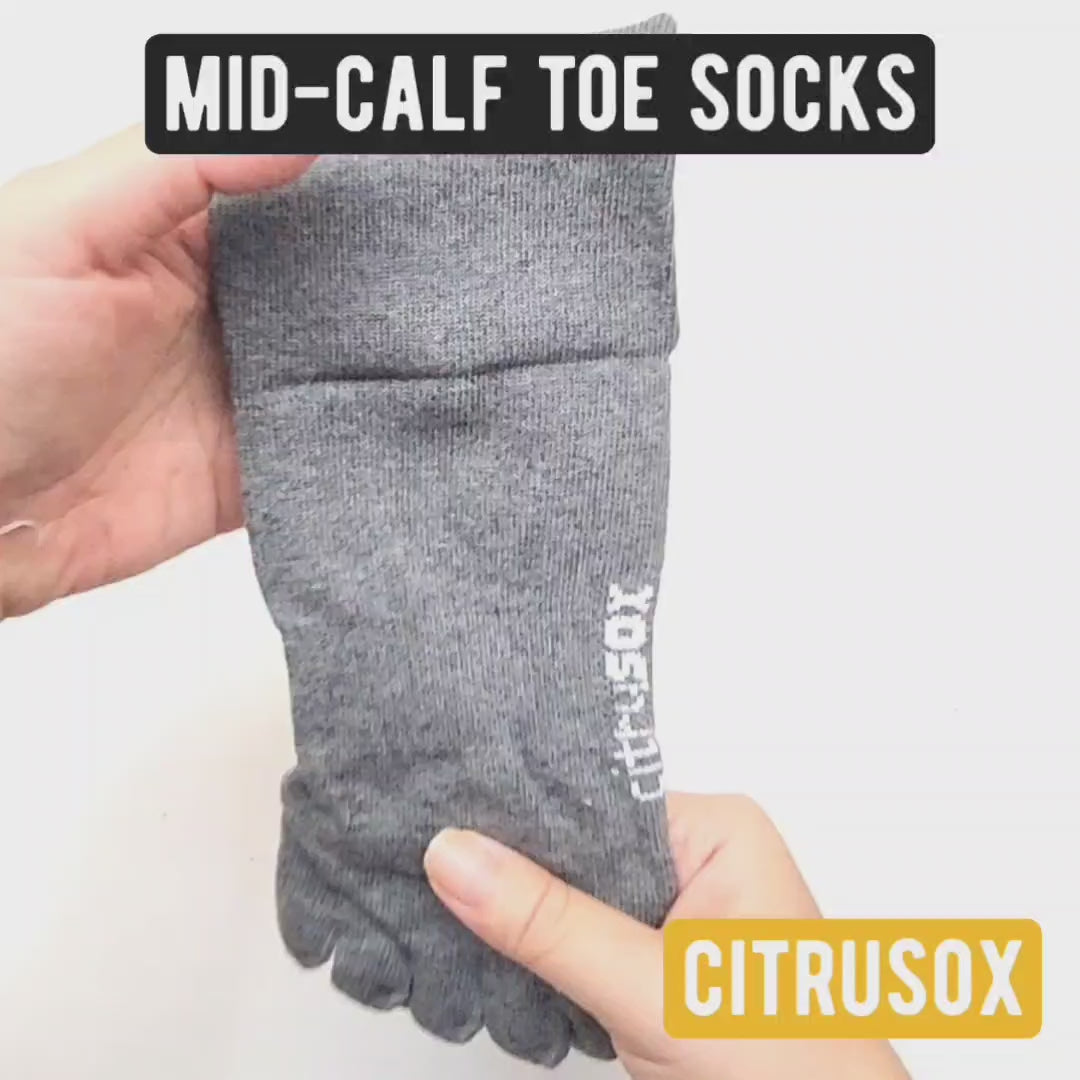Why You Should Never Sleep in Tight Socks
Do you tend to sleep in socks because it's comfy? Have you ever considered whether sleeping with socks on, or tight socks, is truly good for you? We at Citrusox adore socks—basic socks, striped socks, wool socks, merino wool socks, and yes, even an everyday nylon sock—but we're also concerned with how you sleep in them. That's why we're going to tell you why sleeping in tight socks is not such a good idea and what you can do instead.
Why Tight Socks Affect Sleep
When socks are too tight, they can restrict circulation in your feet and legs. Poor circulation may lead to discomfort, numbness, or swelling that interrupts sleep. Even if you’re wearing wool socks, merino wool socks, plain socks, pattern socks, or a snug nylon sock, the pressure they create while sleeping can have negative effects.
The Health Risks of Sleeping in Tight Socks
Sleeping in tight socks doesn’t just feel uncomfortable—it can also cause health issues. Some of the most common problems include:
-
Restricted blood flow that leaves feet feeling cold or tingly
-
Trapped heat, especially with wool socks or merino wool, that can make feet sweat excessively
-
Higher chances of fungal infections due to moisture buildup
-
Marks and irritation on the skin from elastic bands
Why Feet Need Room to Breathe
Our feet naturally regulate temperature during sleep. Tight socks, whether plain socks, pattern socks, or a snug nylon sock, stop this process by holding in heat and sweat. While wool socks are excellent for warmth in cold weather, they should always have enough room for airflow to avoid overheating.
Choosing Better Socks for Bedtime
If you prefer wearing socks at night, the type and fit matter more than the design. Plain socks and pattern socks can both be suitable, but they should not be tight. Wool socks and cotton socks should feel soft and breathable, while a nylon sock is better when it has a gentle stretch without cutting into the skin.
Plain Socks vs. Pattern Socks at Night
When it comes to sleep, there is no real difference between plain socks and pattern socks—what matters is comfort. A nylon sock may feel light and sleek, while wool socks or merino wool socks keep you warm. However, if any of these socks are too tight, they can disrupt your sleep.
Healthy Sock Habits for Sleep
To keep your feet comfortable and healthy while sleeping, consider these habits:
-
Choose loose plain socks or soft pattern socks if you want to wear socks to bed
-
Use wool socks or merino wool socks only during cold nights, making sure they are not restrictive
-
Opt for a breathable nylon sock when the weather is warm
-
Avoid socks that leave marks or indentations on your legs after wearing them
Why We Care About Your Comfort
At Citrusox, socks are more than just accessories—they’re part of our everyday comfort. We design plain socks, pattern socks, nylon sock collections, wool socks, and merino wool socks to suit every need. But we also encourage you to use them wisely, so your feet stay healthy and your sleep remains undisturbed.
Conclusion
Sleeping in tight socks can interrupt blood circulation, trap moisture, and prevent your feet from regulating temperature properly. Whether it’s plain socks, pattern socks, wool socks, merino wool socks, or a nylon sock, wearing them too tightly at night can cause discomfort and even long-term foot issues. Choosing the right fit makes all the difference for a restful and healthy sleep.
At Citrusox, we care about how socks affect your comfort every day and night. From plain socks to pattern socks, wool socks to merino wool, and even a breathable nylon sock, our focus is on designs that balance style and comfort. Reach out to us now and let us help you find the right pair for your needs!
FAQs
Yes, sleeping with tight socks can restrict circulation and cause discomfort throughout the night. Whether they are plain socks, pattern socks, wool socks, merino wool, or a nylon sock, tightness can affect foot health.
Sleeping with socks that are too tight can affect circulation by putting pressure on your feet and legs. Loose plain socks, soft wool socks, or breathable nylon sock choices are better for nighttime comfort.
Yes, tight socks restrict blood flow by compressing the veins and arteries in your feet. This can happen with wool socks, merino wool socks, plain socks, pattern socks, or even a nylon sock if they are too snug.
It depends on comfort and temperature—sleeping barefoot allows your feet to breathe, while loose wool socks or merino wool socks provide warmth in colder nights. The key is to avoid tight plain socks, pattern socks, or a nylon sock that may disturb circulation.
The best socks for sleeping are loose-fitting wool socks, merino wool socks, or soft plain socks that keep warmth without restricting circulation. Pattern socks and a breathable nylon sock can also work if they are not tight.
Sleeping with socks can improve sleep quality if the socks are loose enough to help regulate body temperature. Tight socks, whether plain socks, pattern socks, wool socks, or a nylon sock, may have the opposite effect by causing discomfort.
Yes, side effects of sleeping in socks include overheating, sweating, and restricted circulation if the socks are tight. Choosing loose plain socks, pattern socks, wool socks, or merino wool socks reduces these risks.
Compression socks are designed to apply pressure for medical purposes and should not be worn overnight unless prescribed. Unlike regular plain socks, pattern socks, wool socks, or a nylon sock, they can overly restrict circulation while sleeping.
Compression socks are generally worn during the day for 8 to 12 hours, depending on medical advice. They are not the same as plain socks, pattern socks, wool socks, or merino wool socks used for comfort.
Yes, compression socks can help prevent blood clots by improving circulation in the legs. However, they serve a medical function and differ from plain socks, pattern socks, wool socks, merino wool, or a nylon sock used for daily wear.















